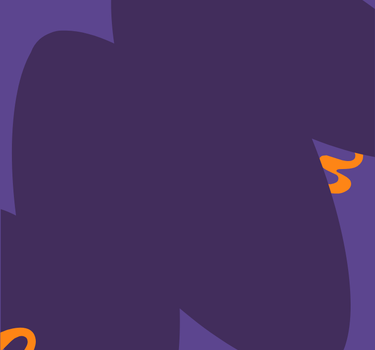Zara, the Spanish fast-fashion giant, is known for its trendy and affordable clothing. Unfortunately, the brand's popularity has made it a target for counterfeiters. Fake Zara clothes not only compromise the brand’s reputation but also deceive customers who think they are purchasing genuine products. Spotting counterfeit Zara items can be challenging, but with a keen eye and some knowledge, you can avoid being duped. This guide will help you identify fake Zara clothes and ensure that you get the quality and style you expect from the brand.
1. Check the Labels and Tags
One of the easiest ways to spot fake Zara clothing is by examining the labels and tags. Genuine Zara items will have consistent and high-quality labels. Here are some specifics to look out for:
- Brand Logo: The Zara logo on the label should be clear and crisp, with no smudges or uneven printing. The font should match the official Zara font.
- Care Labels: Authentic Zara clothes come with detailed care labels, usually stitched on the inside seam. These labels provide washing and care instructions in multiple languages and should be neatly sewn without loose threads.
- Price Tags: Genuine Zara price tags are attached with a plastic fastener, not a safety pin or string. The tag should display the product code, size, price, and barcode.
2. Inspect the Quality of Fabric and Stitching
Zara is known for its reasonably good quality despite being a fast-fashion brand. Counterfeit items often use inferior materials and have poor workmanship. Here’s what to look for:
- Fabric: Feel the fabric and check for its texture and quality. Authentic Zara items use quality materials, whereas fakes may feel cheap, rough, or thin.
- Stitching: Examine the stitching on the garment. Genuine Zara clothes have even, tight stitches without loose threads or gaps. Counterfeit items often have uneven stitching and may fall apart more easily.
3. Examine the Buttons and Zippers
Buttons and zippers can be a giveaway when it comes to spotting fake Zara clothes. Authentic Zara items use high-quality buttons and zippers that are firmly attached and functional.
- Buttons: Check if the buttons are securely sewn on. Genuine Zara buttons may have the brand name engraved or a distinct design. Fake items might use generic buttons that look cheap.
- Zippers: The zippers on real Zara clothes are smooth and functional, often branded or from well-known manufacturers like YKK. Fake items might have zippers that are stiff, unbranded, or easily breakable.
4. Look at the Product Code
Each Zara item has a unique product code that you can use to verify its authenticity. This code is typically found on the price tag and care label.
- Consistency: The product code should be consistent across all tags and labels. If you notice different codes or any discrepancies, the item might be fake.
- Verification: You can cross-check the product code on Zara’s official website or app to see if it matches the item’s description and images.
5. Compare with Official Zara Images
When in doubt, compare the suspected fake item with images of the same product on Zara’s official website. Pay attention to details such as colour, pattern, and design.
- Design Details: Counterfeit items might have subtle differences in design, such as incorrect patterns, missing details, or incorrect placement of embellishments.
- Colour: The colour of the fake item may be slightly off compared to the official product images.
6. Purchase from Authorized Retailers
To minimise the risk of buying fake Zara clothes, purchase directly from Zara’s official stores, website, or authorised retailers. Be cautious when buying from third-party websites, marketplaces, or social media platforms.
- Official Channels: Zara’s official website and physical stores are the safest places to buy genuine products.
- Trusted Retailers: If you’re buying from a third-party retailer, ensure they are reputable and authorised to sell Zara products.
7. Be Wary of Unusually Low Prices
If a deal seems too good to be true, it probably is. Fake Zara clothes are often sold at significantly lower prices than authentic items.
- Price Comparison: Compare the price with Zara’s official pricing. A substantial discount might indicate a counterfeit product.
- Sales and Discounts: While Zara does have sales, the discounts are usually moderate. Extremely low prices are a red flag.
8. Check the Seller’s Reviews and Ratings
When buying Zara clothes online, especially from marketplaces like eBay or Amazon, check the seller’s reviews and ratings.
- Positive Feedback: Look for sellers with high ratings and positive feedback from previous buyers.
- Negative Reviews: Be cautious of sellers with numerous negative reviews, especially those mentioning counterfeit products.
9. Trust Your Instincts
Lastly, trust your instincts. If something feels off about the purchase, it’s better to walk away. Your intuition can be a valuable tool in avoiding counterfeit items.
- Gut Feeling: If you have any doubts about the authenticity of the item, it’s better to err on the side of caution.
- Return Policy: Check the return policy of the seller. Genuine retailers usually have a clear and fair return policy.
Conclusion
Spotting fake Zara clothes requires attention to detail and a bit of research. By checking labels and tags, inspecting fabric and stitching, examining buttons and zippers, and verifying product codes, you can avoid counterfeit items. Always purchase from authorised retailers and be cautious of unusually low prices. Remember, it’s better to invest a little more in genuine products than to risk buying fakes. With these tips, you can shop for Zara clothes with confidence, knowing you’re getting the real deal.
Also read: How to Know If Your Kate Spade Bag Is Real or Fake




